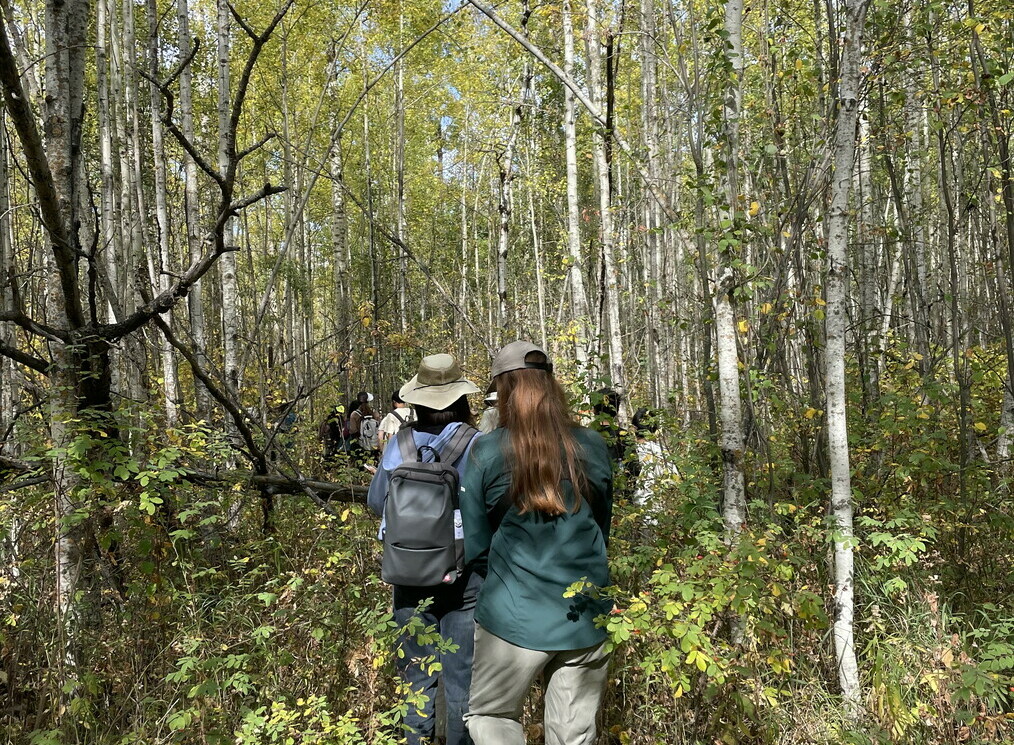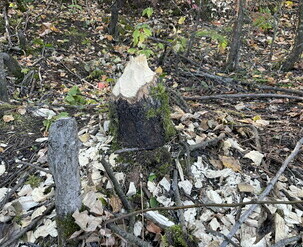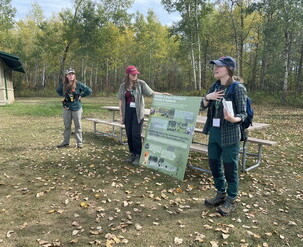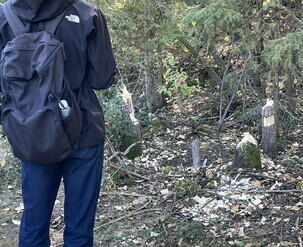Why Walking the Land Matters
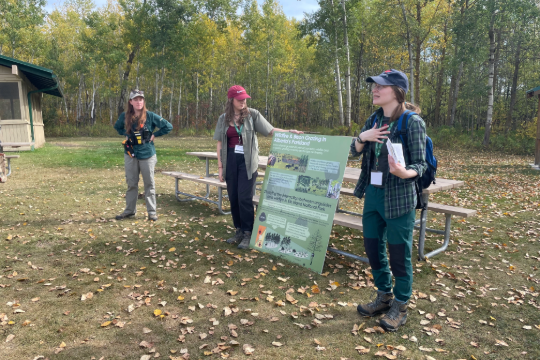
What happens when you take conservation science out of the lab and into the landscape? When you invite people to not only hear about forest ecosystems, but to immerse themselves in them – walking the land, feeling the grasses underfoot and hearing directly from those who care for these places?
On September 20, 2025, during National Forest Week, Northern Forestry Centre (NoFC) and Elk Island National Park (EINP) hosted two guided hikes in the Beaver Hills Biosphere – Beavers and History and Bison and Fire. The hikes weren’t just a celebration of forests, they were a reminder of why they matter and of the deep relationships that exist between people, wildlife and the land.
Many participants from across the region joined the hikes, where themes like climate resilience, cultural knowledge, habitat restoration and ecological research came alive in the field. These lessons were made tangible in the burnt trunks of prescribed fire zones, the chewed stumps near a beaver lodge, the shifting mosaic of forest and parkland, and in the stories shared by Indigenous Knowledge Holders, park ecologists and forestry scientists.
The Beavers and History walk followed the Shoreline Trail next to Astotin Lake, where participants observed active beaver lodges, dams and tree markings while learning about coexistence and climate challenges. The hike paired Western science with Indigenous knowledge, highlighting the interplay between beavers, humans and forests, and the cultural importance of beavers and their critical role as ecosystem engineers.
“The beaver walk was a powerful reminder of the role these animals play in buffering drought, storing water and shaping the land,” explains David Bruinsma with Parks Canada. ”Yet they themselves are vulnerable to the impacts of climate change. Their survival is tied to water availability just like ours.”
In the Tawayik Lake area, another group of people joined the Bison and Fire hike, which highlighted a long-term collaborative research study between EINP and NoFC. The study investigated how bison grazing and prescribed burning interact to influence forest composition and overall biodiversity.
“It’s one thing to talk about prescribed burns in theory. It’s another to stand in the middle of a burn site and understand what it means for biodiversity, for grassland recovery and for the rebuilding of bison habitat in Elk Island Park,” adds Chloé Lamache with NoFC.
These walks and what people experienced and learned during their time on the land underscored how diverse partners across the Beaver Hills are working together to protect and restore complex ecosystems. These efforts are not isolated projects but interconnected responses to the realities of climate change, habitat loss and shifting land use. By combining science, Indigenous perspectives and public engagement, partners are shaping a more resilient future for the region; one rooted in stewardship, respect for the land and shared responsibility.
These are the experiences that build lasting connections between people and place, and the relationships they nurture with the land will last a lifetime. We invite you to find your place in the Beaver Hills Biosphere.
